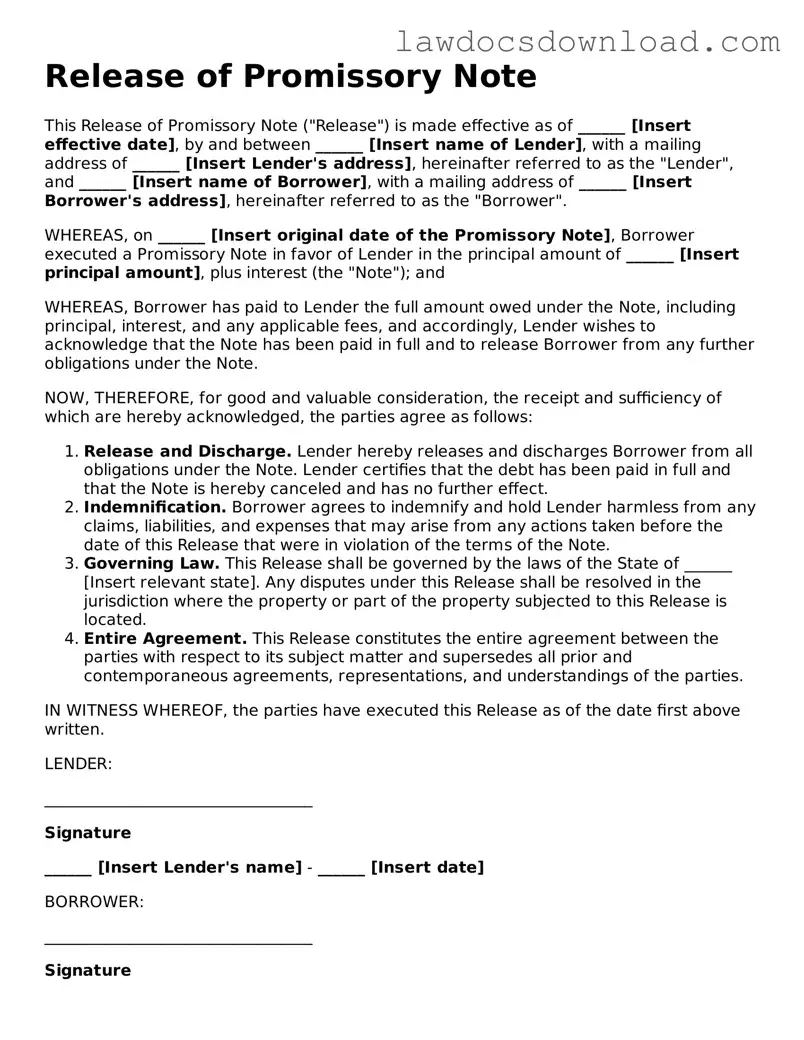Release of Promissory Note
This Release of Promissory Note ("Release") is made effective as of ______ [Insert effective date], by and between ______ [Insert name of Lender], with a mailing address of ______ [Insert Lender's address], hereinafter referred to as the "Lender", and ______ [Insert name of Borrower], with a mailing address of ______ [Insert Borrower's address], hereinafter referred to as the "Borrower".
WHEREAS, on ______ [Insert original date of the Promissory Note], Borrower executed a Promissory Note in favor of Lender in the principal amount of ______ [Insert principal amount], plus interest (the "Note"); and
WHEREAS, Borrower has paid to Lender the full amount owed under the Note, including principal, interest, and any applicable fees, and accordingly, Lender wishes to acknowledge that the Note has been paid in full and to release Borrower from any further obligations under the Note.
NOW, THEREFORE, for good and valuable consideration, the receipt and sufficiency of which are hereby acknowledged, the parties agree as follows:
- Release and Discharge. Lender hereby releases and discharges Borrower from all obligations under the Note. Lender certifies that the debt has been paid in full and that the Note is hereby canceled and has no further effect.
- Indemnification. Borrower agrees to indemnify and hold Lender harmless from any claims, liabilities, and expenses that may arise from any actions taken before the date of this Release that were in violation of the terms of the Note.
- Governing Law. This Release shall be governed by the laws of the State of ______ [Insert relevant state]. Any disputes under this Release shall be resolved in the jurisdiction where the property or part of the property subjected to this Release is located.
- Entire Agreement. This Release constitutes the entire agreement between the parties with respect to its subject matter and supersedes all prior and contemporaneous agreements, representations, and understandings of the parties.
IN WITNESS WHEREOF, the parties have executed this Release as of the date first above written.
LENDER:
__________________________________
Signature
______ [Insert Lender's name] - ______ [Insert date]
BORROWER:
__________________________________
Signature
______ [Insert Borrower's name] - ______ [Insert date]
